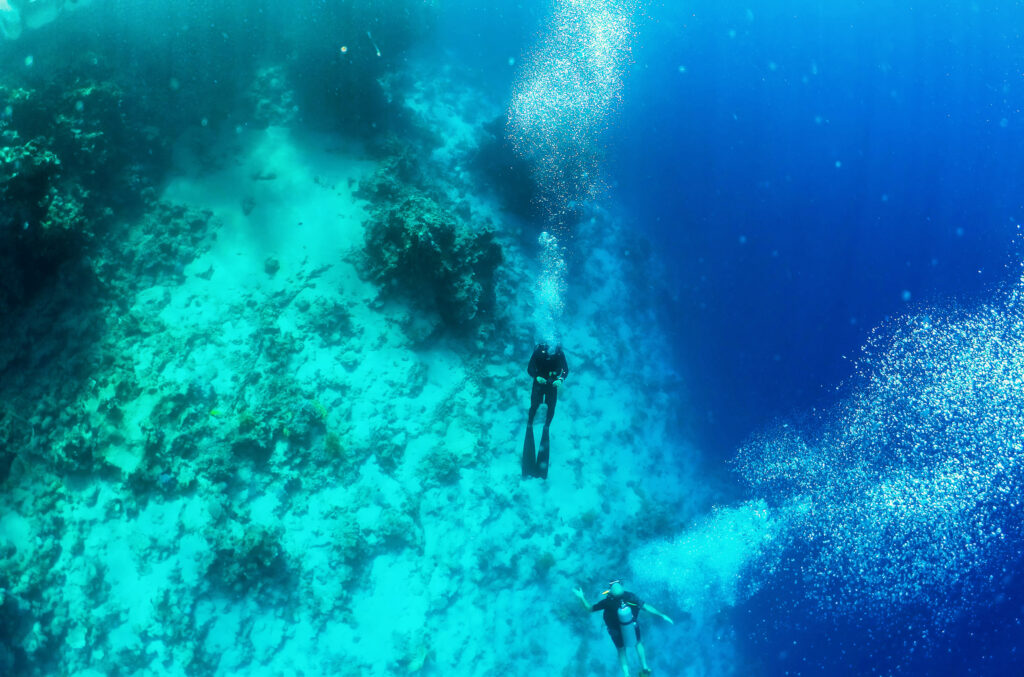What is Oxygen?

Oxygen is a fundamental element essential for the survival of almost all living organisms. In the context of scuba diving, understanding oxygen’s properties and its role is crucial for both safety and performance. This article delves into the various aspects of oxygen, from its basic chemistry to its physiological effects on divers, and the technologies used to manage it underwater. As one of the critical components in breathing gas mixtures, oxygen’s management and the equipment designed for its delivery are vital for successful and safe scuba diving experiences.
What is Rapture of the Deep?

Rapture of the Deep, commonly known as nitrogen narcosis, is a condition experienced by scuba divers at significant depths. This phenomenon, resulting from the increased partial pressure of nitrogen when diving, can lead to a range of symptoms that affect cognitive and motor functions. Understanding Rapture of the Deep is crucial for divers to ensure safe practices and avoid potentially hazardous situations underwater.
What is Partial Pressure?

Partial pressure is a fundamental concept in physics and chemistry, particularly significant in the context of scuba diving. It refers to the pressure exerted by a single type of gas in a mixture of gases. Understanding partial pressure is crucial for divers as it influences how gases are absorbed, transported, and expelled in the human body under varying underwater conditions. This concept helps in comprehending how different gases behave under increased pressures encountered at depth and is essential for ensuring safety and preventing diving-related illnesses.
What is Wet Filling?

Wet filling is a process used in scuba diving to fill diving cylinders with gas while they are submerged in water. This method is important for ensuring safety and efficiency in scuba diving. By understanding the intricacies of wet filling, divers can better appreciate its significance and the technical considerations involved.
What is Trimix?

Trimix is a specialized breathing gas mixture used by technical divers to safely reach greater depths than what is achievable with air or nitrox. Comprising oxygen, nitrogen, and helium, trimix helps mitigate the risks associated with deep diving, such as nitrogen narcosis and oxygen toxicity. By reducing the proportion of nitrogen and oxygen in the breathing mix, trimix allows divers to explore depths well beyond recreational limits while maintaining a safer physiological profile.
What is Compressed Air?

Compressed air, essential in scuba diving, refers to air that has been pressurized to fit into a smaller volume, typically within a scuba tank. This enables divers to breathe underwater for extended periods. Understanding compressed air is vital for divers, as it directly impacts safety, dive planning, and equipment use. Historically and technologically significant, compressed air has evolved through innovations, becoming a cornerstone of modern diving.
What is a Cubic Foot (cf)?

A cubic foot (cf) is a unit of measurement representing volume and is commonly utilized to denote the size of scuba cylinders, which are critical components in the scuba diving experience. Scuba cylinders contain the compressed breathing gas essential for underwater excursions, enabling divers to breathe comfortably as they explore the aquatic environment. The size of a scuba cylinder, often expressed in cubic feet, directly correlates to the amount of air it can hold and the potential dive duration. This entry will explore the concept of cubic feet in relation to scuba cylinders, the significance of various cylinder sizes, and the factors influencing the choice of cylinder for different diving scenarios.
What is Nitrogen?

What is Nitrogen? Nitrogen is an inert gas, meaning it does not readily participate in chemical reactions. It constitutes approximately 78% of the Earth’s atmosphere, with the remaining 22% made up of oxygen, trace gases, and water vapor. While nitrogen is essential for various biological processes and is harmless when inhaled at normal atmospheric pressure, […]
What is Reserve Gas in Scuba Diving?

What is Reserve Gas in Scuba Diving? Reserve Gas, a term of paramount importance in the world of scuba diving, refers to a portion of gas supply that a diver sets aside exclusively for emergency situations. It is an integral part of the diving planning and execution process. This reserve is not meant to be […]
What is Residual Gas in Scuba Diving?

What is Residual Gas in Scuba Diving? Residual gas, a significant concept in scuba diving, refers to the volume of gas that remains in a diving cylinder from a previous fill. Understanding and managing residual gas is crucial for divers, as it can have implications for safety, dive planning, and equipment efficiency. Definition and Relevance […]
